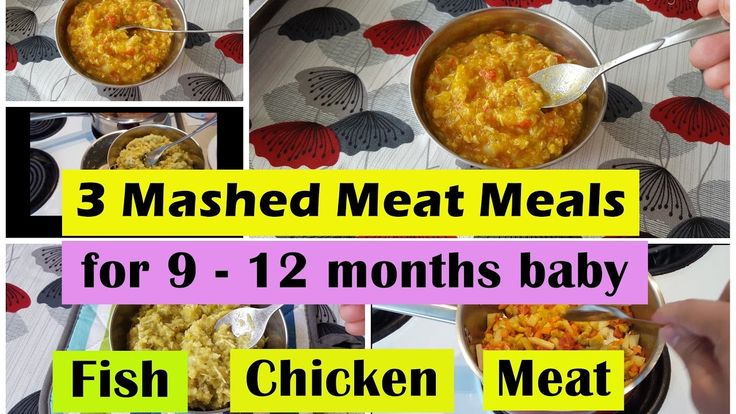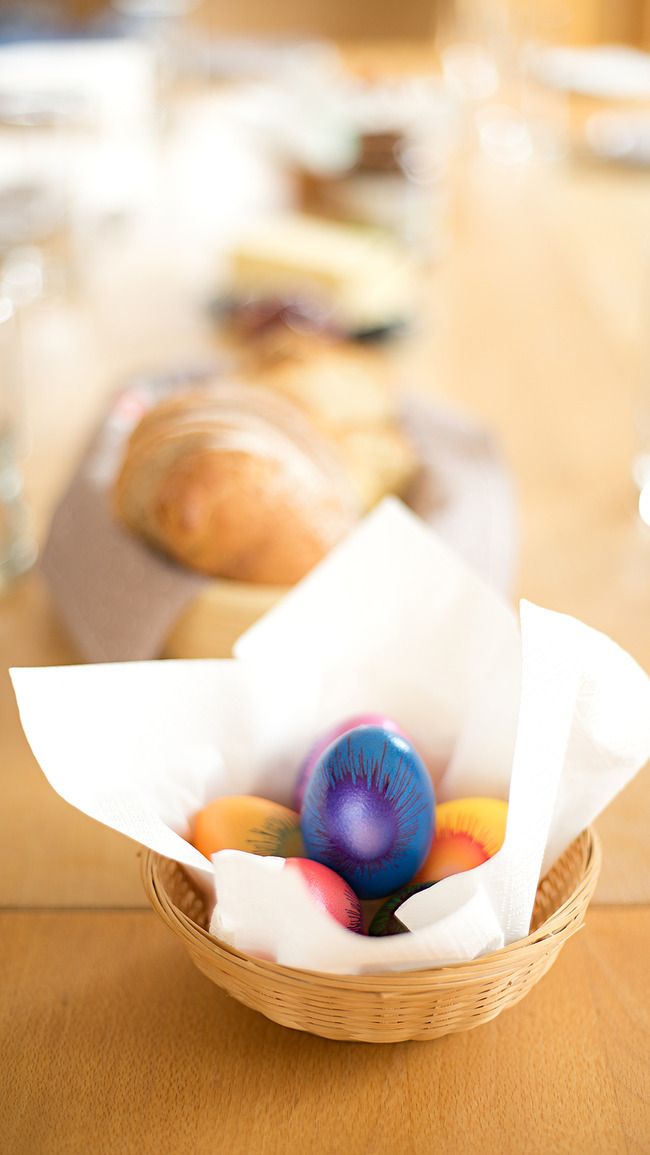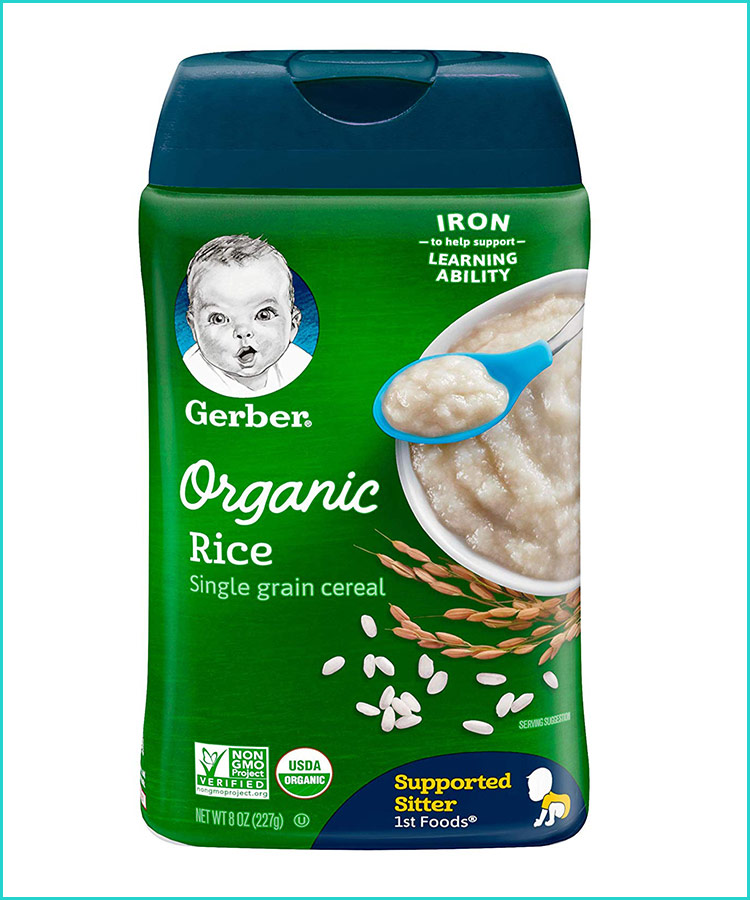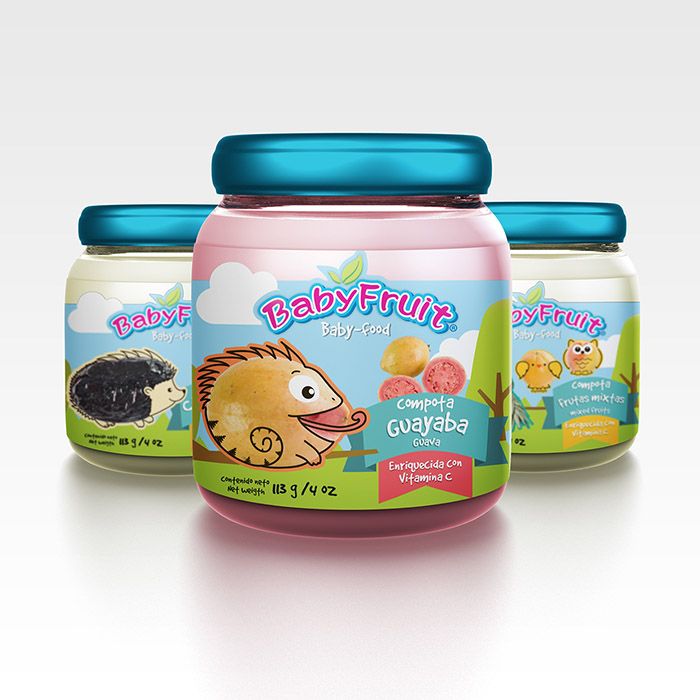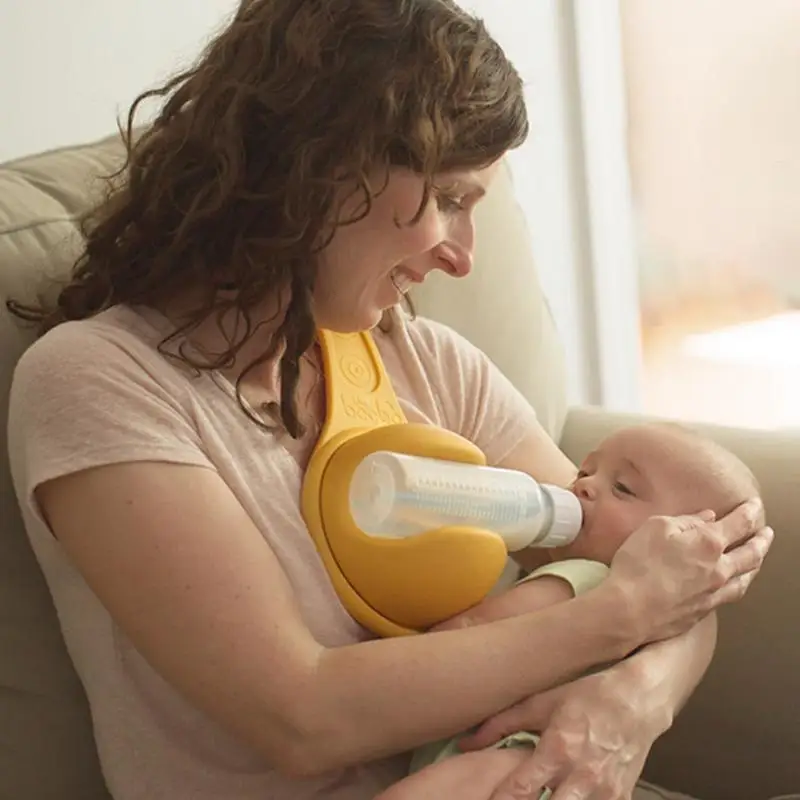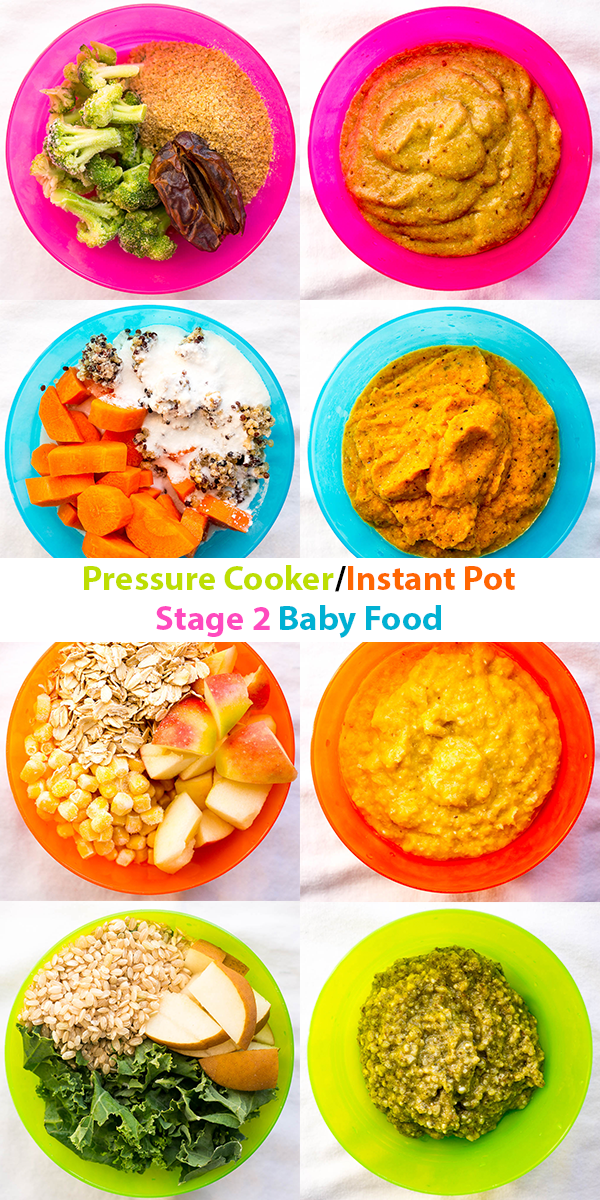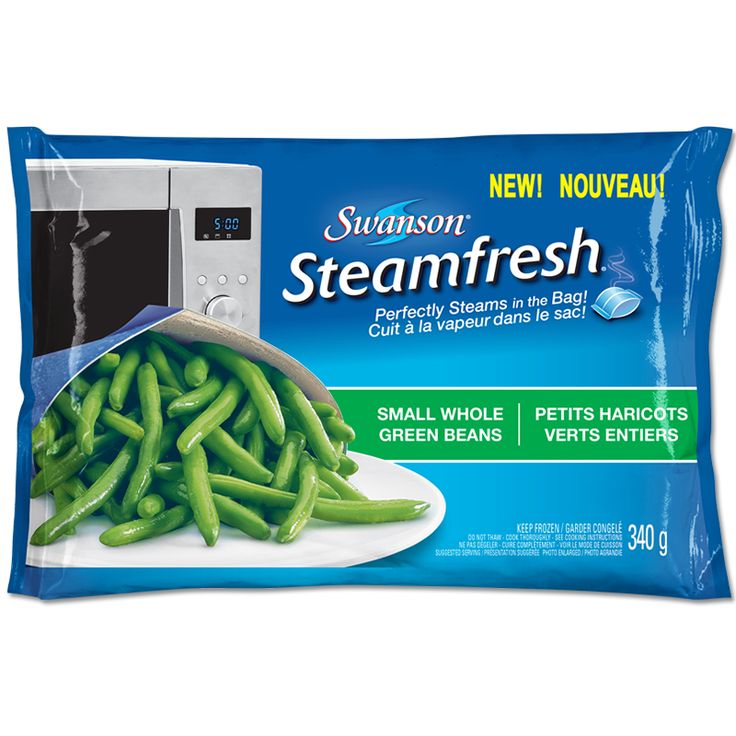Hand feed formula for baby birds
Instructions For Hand-Feeding Baby Birds
More Bird Topics ▼
The idea of a new baby bird in the family is an exciting proposition that brings a new dimension to your life. However, if you decide to hand-feed your new pet, you will need some knowlege, a lot of patience, and a good diet for a growing bird.
Veterinarians and naturalists have developed techniques for hand raising nesting birds, and
there are now easy-to-use special baby bird formulas for feeding the ever-hungry little babies.
Higgins Intune Baby Bird Hand Feeding Formula and
Higgins Intune Hi Energy Baby Macaw Hand Feeding Formula
are super foods that meet the extraordinary nutritional needs of these unusually fast
growing babies. It is rice based (sourced from North America) and corn free. inTune® Natural Hand Feeding uses natural and healthy, high end sources for nutritional fat like coconut oil and macadamia nut meal. It is also the only commercial hand feeding formula on the market with natural banana & mango aroma.
The need to cook the formula has also been eliminated. It
can now be prepared with hot water!
Most baby birds arrive in the world wet, naked, blind, and too weak to support themselves. When fallen from their nest, survival is questionable. Now, with help, they are able to grow and develop normally. Wild birds can be raised and returned to nature. Pet birds learn to accept people as friends. The real benefactors, though, are people. Nature returns many-fold for kindness performed.
Hand-Feeding
The most important considerations in the hand feeding process are the frequency
and volume of feeding. Baby birds grow at an extraordinarily rapid rate and this growth
requires a great deal of food to meet the nutritional needs of the bird. However, the crop
of a young bird holds a limited amount of food, so it must be filled frequently.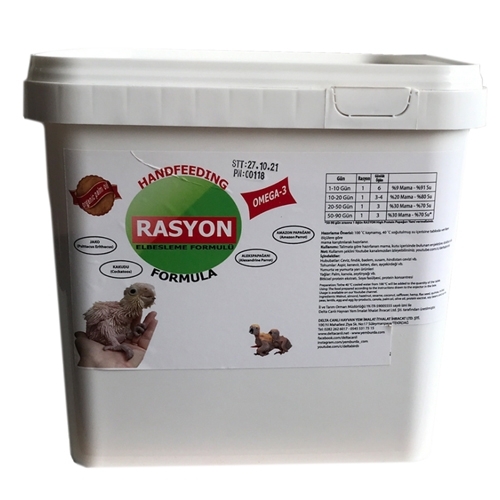 As the
bird gets older, the capacity of the crop increases, and the number of daily feedings will
be reduced. The volume to be fed is base upon a combination of observation and judgement.
As the
bird gets older, the capacity of the crop increases, and the number of daily feedings will
be reduced. The volume to be fed is base upon a combination of observation and judgement.
Procedure
Check the Fullness of the Crop
Nature designed a rather unique feature into the digestive system
of birds-a widening of the oesophagus at the lower pan of the neck This
widening acts as a compartment to hold a quantity of food, and is named
the crop.
The crop can be easily visualized in young birds while feathering is incomplete. In older birds with a well developed covering of feathers, the fullness can be checked by gently feeling the crop with a thumb and index finger.
The crop should be examined before each feeding. Ideally, in the rapidly
growing young bird, the crop should never be allowed to become completely
empty.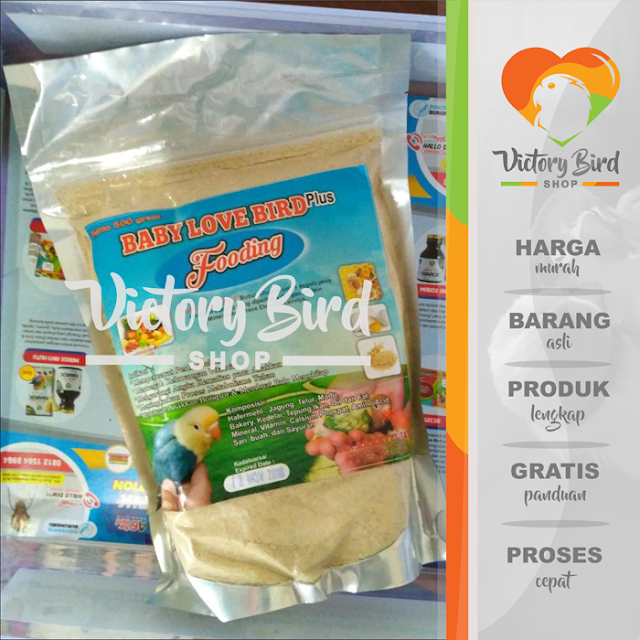 Checking the crop fullness will help determine the frequency
and volume of feeding to be given. Normally the crop will empty in 4
hours. A crop that remains full or is not emptying properly indicates
some type
of problem.
Checking the crop fullness will help determine the frequency
and volume of feeding to be given. Normally the crop will empty in 4
hours. A crop that remains full or is not emptying properly indicates
some type
of problem.
Position Bird for Hand-Feeding.
Wild birds are best fed while in a nest box. They will open their beaks and gape,
making feeding very easy. Avoid excessive handling of wild birds. Pet birds are removed
from the nest box and placed on a towel. By cupping a hand gently around the baby during
feeding , adequate support will be given to position him for eating.
Shop Avian Adventures Lifetime Cages
On Sale now. Free Shipping.
Carefully Introduce Feeding Device into the Mouth.
The introduction of an eye dropper or syringe into the mouth is
relatively easy, as the baby birds will be eager to be fed and will be gaping
(opening the beak wide in order to receive the feeding). Occasionally, a
bird may not gape, and gentle tapping of the beak with the feeding device
will encourage the bird to open its beak. The device should be carefully
passed into the left side toward the right side of the mouth.
Occasionally, a
bird may not gape, and gentle tapping of the beak with the feeding device
will encourage the bird to open its beak. The device should be carefully
passed into the left side toward the right side of the mouth.
Administration of the formula should be synchronized with swallowing. Birds swallow with an unusual rhythmic bobbing of the head up and down. While the bird is swallowing, the formula is delivered quickly. With practice, a "feet" for the procedure develops, and, done efficiently, the filling of the crop can be accomplished in a surprisingly short time.
Volume of formula to be Given
The volume of food given is of critical importance. overfilling of the crop could
lead to backflow up the oesophagus, into the throat, and down the windpipe, which could
cause death. Under-filling the crop might result in starvation.
As t he food material is being delivered, the crop will begin to fill
and bulge in the region of the lower neck.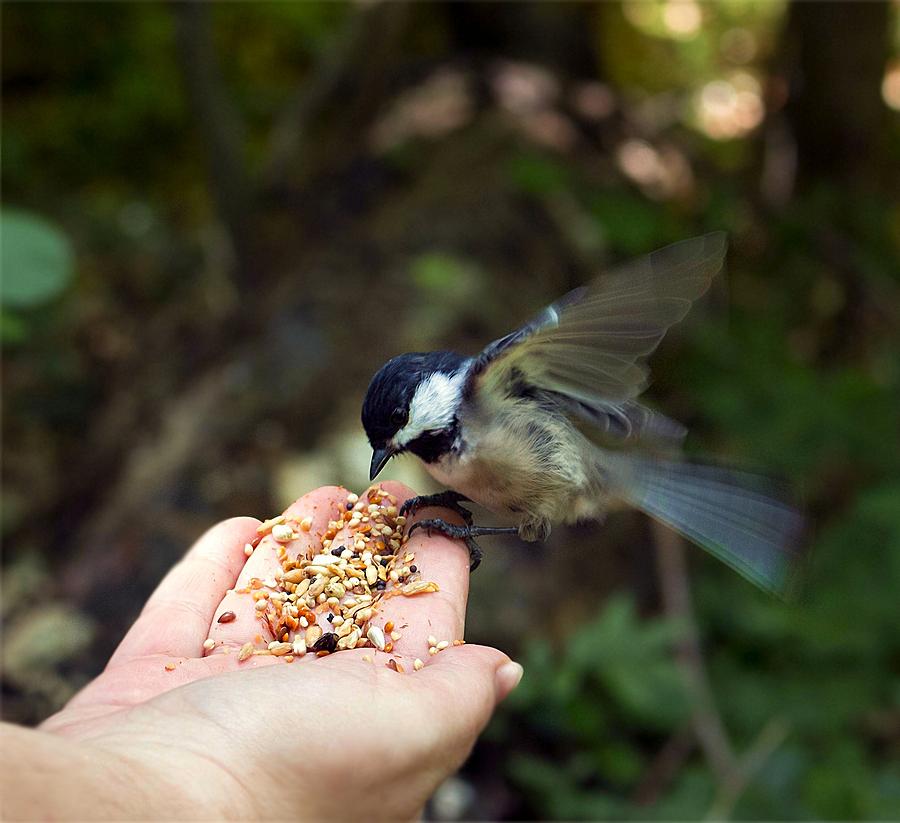 Careful observation and experience
are necessary in order
to determine when the crop is adequately filled.
Careful observation and experience
are necessary in order
to determine when the crop is adequately filled.
Frequently, the bird will stop gaping when the crop is filled; however, some birds, will continue to gape even when filled. Watch closely when filling for any evidence of food material backing up into the mouth. If this occurs, immediately stop until the mouth is cleared.
When the bird appears to have had enough feeding material, determine the state of fullness of the crop to make sure a sufficient amount of feeding was delivered.
Any excess food material on the skin, beak or feathers should he removed
with warm water when the feeding is complete. It can be followed with a
few drops of warm water to aid in "cleaning the mouth." Feeding
utensils should be cleaned immediately after use. Check the anus to be
certain no fecal matter has accumulated. Ideally, monitor the bird's weight
daily with an accurate scale. A healthy baby gains weight daily.
Ideally, monitor the bird's weight
daily with an accurate scale. A healthy baby gains weight daily.
Preparation of Baby Bird Formula
Follow the manufacturer's directions when mixing the formula.
Important: "Use distilled or boiled water to eliminate bacteria growth from contaminated tap water." The water should be approximately 105-110 degrees. Add the water to the powder gradually while stirring. After thorough mixing to eliminate lumps, the formula should be the consistency of creamy pudding. This thickness will allow it to be drawn into an eye dropper or syringe or will roll off a spoon. For older birds the mixture may be made thicker.
Do not reuse mixed formula. Discard and mix fresh at each feeding.
If really necessary, sufficient amount of formula may be prepared at one time to last 3
days if covered and refrigerated after preparation. The amount needed for each feeding can
be heated and fed but not reused. Caution: You might need to add water in the heating
process. Diluting formula by increasing water will reduce the concentration of the diet.
The amount needed for each feeding can
be heated and fed but not reused. Caution: You might need to add water in the heating
process. Diluting formula by increasing water will reduce the concentration of the diet.
Temperature to Feed Formula
The formula should be served warm- 104-106 F- but not hot, as excess
heat may damage the digestive tract. It should feel Slightly warm to the touch. It is
highly recommended to use a thermometer to measure the temperature.
In order to maintain the heat of the hand-feeding formula mixture, a double-boiler type arrangement can be set up with the container of prepared formula placed in a bowl or pan of warm water during the feeding process.
Feeding Area
Psittacine birds while being fed should be placed on a surface, such as a towel,
where there will be insulative properties to prevent excess heat loss and a surface where
they can grip with their feet, preventing slippage and possible injury.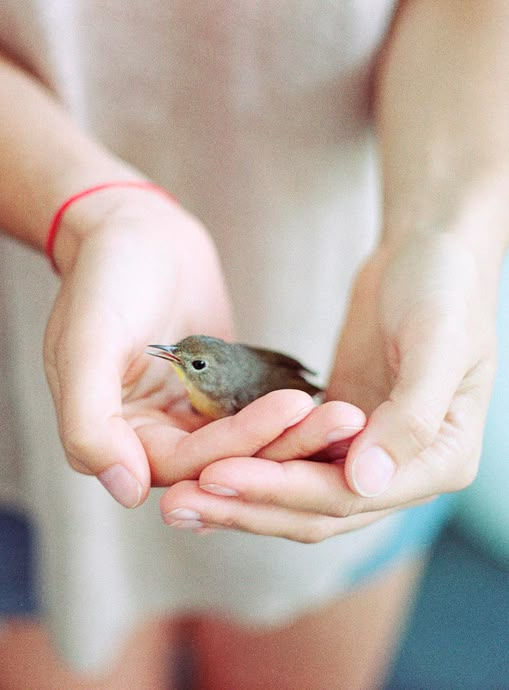
Frequency of Feeding
Cockatiels and Small Parrots
Baby birds can be removed from their parents from between 8 to 21 days. Waiting
until 2 1/2 to 3 weeks is safer for the beginner, as the bird is hardier due to the
presence of some feathering.
Hatching to 1 week.
If the bird was removed from the nest shortly after hatching, for whatever
reason, feeding requires special care. There should be no attempts to feed the bird for at
least 12 hours after hatching. The crop is very small and will hold only a limited amount
of food. After continued use, it will expand. The first feeding at 12 hours should be one
drop of water. Approximately 1/2 to 1 hour later, another drop of water may be given.
Feeding too frequently during this period may overload the crop and lead to aspiration and
death.
After these initial feedings, if the baby appears normal and is excreting,
a few drops of very thin formula can be given. In order
that the baby bird receive enough food, the hand-feedings are repeated every two hours around the clock.
In order
that the baby bird receive enough food, the hand-feedings are repeated every two hours around the clock.
One to two weeks - Birds can be fed every 2-3 hours around the dock. If the birds are kept especially warm and comfortable, the night feedings after midnight can be eliminated. However, feedings must begin again at 6:00 AM.
Two to three weeks - This is a relatively safe age to remove the baby birds from the nest for hand-feeding. It is easier to check the crop and feed them. The birds of this age can be fed every three to four hours from 6:00 A.M. to midnight.
Three to four weeks - Feed the birds every 4 hours. As feeding frequency tapers off, the formula can be slightly thickened. At 4 weeks, the birds can be put in a cage with low perches. Water in a bowl may be placed inside.
Five to six weeks - Feed the birds twice daily. A pelleted bird food
and other foods may be placed in the cage to encourage the bird to eat on its own.
A pelleted bird food
and other foods may be placed in the cage to encourage the bird to eat on its own.
Seven weeks - Birds should be placed in a large cage with pellets in cups and scattered on the floor. Introduce the birds to a variety of succulent foods, but these should not make up more than 20% of the diet. Vegetables such as peas and corn are well accepted.
Weaning
Birds should not be weaned before 7 weeks, usually about 8 weeks. Before weaning
the bird off hand-feeding, keep close watch to see that the bird is actually eating
adequate amounts of pellets on its own and not merely nibbling at the food. Handle the
crop to determine the fullness and check the breastbone for degree of muscling. A weaning
bird may lose as much as 10% of it's weight normally. Any more than that may be an
indication of a problem. It is recommended that the bird be weighed regularly through this
period.
When first weaning the bird, give them pellets, as these are a nutritionally complete and balanced diet for the bird. It is a good idea to keep an older bird in a cage next to the cage with the young weanling to teach them to eat through mimicry.
If the baby birds are not weaned, they will become "spoiled" and will not eat on their own, preferring to be hand fed. However, if they are weaned too early, they will not eat adequately, gradually lose weight, become weak and die. Therefore, if baby birds are begging to be fed, even after they are weaned, there may need to be a reversal back to hand-feeding as they may not be eating adequately.
FREQUENCY OF HAND-FEEDING COCKATIELS and SMALL PARROTS
| Age in Weeks | Number of Daily Feedings |
0 |
Every 2 Hours (Around the Clock) |
| 1 | Every 2 Hours (Around the Clock*) |
| 2 | Every 3 Hours (6 a. m. to Midnight) m. to Midnight) |
3 |
"Safest" Period To Begin Hand Feeding Every 4 Hours (6 a.m. to Midnight) |
| 4 | Every 5 Hours (6 a.m. to Midnight) |
| 5 to 7 | Two Feedings Daily |
*If bird is kept especially warm and comfortable, the 2 a.m. and 4 a.m. feedings can be eliminated.
Weaning Period - Important -
Make sure bird is eating adequately on its own before discontinuing hand-feeding. Check
fullness of crop.
Housing and Heat
A small cardboard box approximately 12" x12"xl2" or a small fish
aquarium with layers of paper towels over a one inch padding of cloth towelling on the
bottom will serve as an incubator and holding area while the babies are young.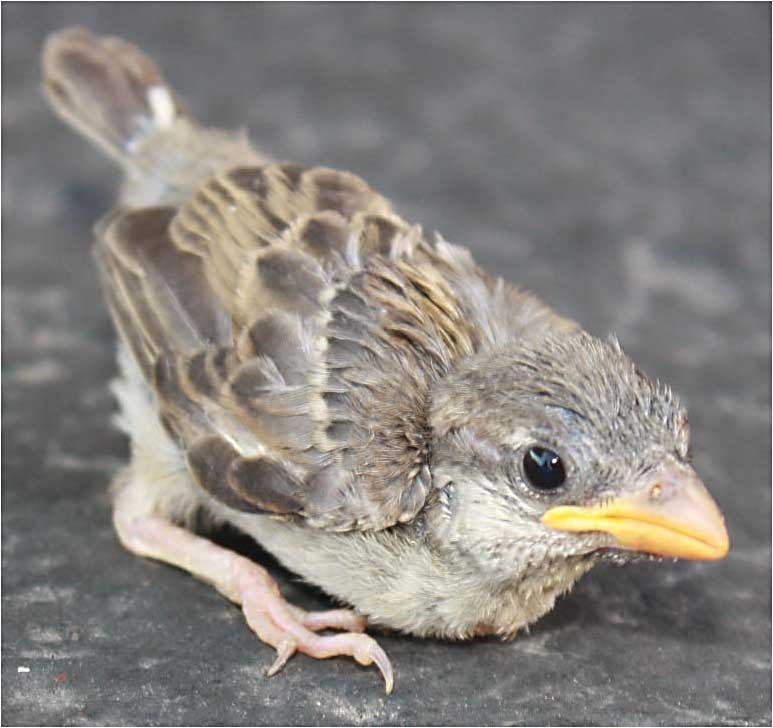 A heating
pad is placed under 1/2 of the box or aquarium. A towel is placed over the top. Either the
heating pad setting or the amount of the top that is covered by the towel may be adjusted
to provide a constant 85-90' for non-feathered birds. The temperature is gradually reduced
as they become feathered and mature. It is recommended to observe the babies carefully to
determine their comfort level. A cold baby will shiver and a baby that is too hot will not
sleep well and will breathe heavily through an open mouth. A bottle or tin filled with
water and holes punched in the lid to allow for evaporation will help to provide humidity.
A heating
pad is placed under 1/2 of the box or aquarium. A towel is placed over the top. Either the
heating pad setting or the amount of the top that is covered by the towel may be adjusted
to provide a constant 85-90' for non-feathered birds. The temperature is gradually reduced
as they become feathered and mature. It is recommended to observe the babies carefully to
determine their comfort level. A cold baby will shiver and a baby that is too hot will not
sleep well and will breathe heavily through an open mouth. A bottle or tin filled with
water and holes punched in the lid to allow for evaporation will help to provide humidity.
WILD BIRDS
Frequency of Feeding
The frequency and volume of feedings given to baby birds are largely determined
by their age. Judging the age of wild birds is difficult if untrained, so the best way to
determine feeding requirements is through the use of readily observable changes in the
bird.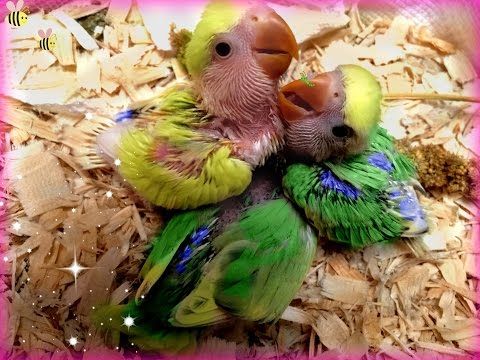 For example, whether or not the eyes are open, and if the bird is standing up
"off their hocks."
For example, whether or not the eyes are open, and if the bird is standing up
"off their hocks."
Before the eyes are open
If the baby birds appear strong and are peeping with their mouths gaping open,
then they can eat as much as they want. Ideally, baby birds of this young age should be
fed every 15-20 minutes until their eyes are open. They can go up to 30 minutes without a
feeding with no ill effects; however, more frequent feedings are preferred. They do not
require around-the-dock feeding as in nature, they are fed only during daylight hours. In
accordance with this, they are given feedings for a 12 hour period. Nonetheless,
hand-feeding wild birds is quite a commitment, as it requires nearly 50 feedings per day.
When the eyes are open
As the bird becomes older, the frequency of hand-feeding can be reduced and the
volume increased. Efforts can be initiated to get the bird to eat on its own. When a bird
initially opens its eyes, it can be fed every half hour unless hungry or peeping.
When a bird
initially opens its eyes, it can be fed every half hour unless hungry or peeping.
When birds are "off their hocks"
When birds become stronger and begin to stand on their legs ("off their
hocks'), then feedings can be given every 45 minutes. Time between feedings can steadily
increased, and when the bird is out of the nest, feedings can be given at 2 hour
intervals.
FREQUENCY OF HAND-FEEDING FOR WILD BIRDS
| Age | Number of Daily Feedings |
Before Eyes Are Open: |
Feed Bird Every 15 Minutes (12 Hour Period) |
| Eyes Are Open: | Feed Bird Every 30 Minutes (12 Hour Period) |
| Off Their Hocks | Feed Bird Every 45 Minutes (12 Hour Period) |
| Bird Out Of Nest: (Standing On Their Own) |
Feed Bird Every 2 Hours (12 Hour Period) |
*Wean at 15 Days
IMPORTANT-Bird must be eating adequately on its own.
Weaning
Wild birds should begin showing interest in their surroundings and start to eat
on their own by 15 days. Provide live food (meal worms) and grass, twigs, etc. in the nest
to stimulate interest in the environment. Spreading seed on the bottom of the nest will
also encourage the bird to eat on its own.
During the weaning period, it is critical to keep a close watch on the bird in order that good nutrition is maintained. Many times, a bird may be pecking at seed, giving the impression that it is eating, when in actuality, it is not taking in enough for maintenance. Therefore, it is very important to observe if the bird is eating seed during this period and regularly check the crop for fullness.
If other young birds who are eating on their own are present, placing
the baby bird in the same cage will hasten socialization, and the bird
will
learn to eat on its own through the
imitation of others.
Housing For Wild Baby Birds
Following nature's design, a nest is constructed. The sides are formed from cloth
rolled to a diameter of 1 1/2 inches and then forming a circular shape like a doughnut.
The nest would have a diameter of 4-8 inches, depending upon the number and size of
the babies. The 1 1/2' height makes the sides of the nest sufficiently high to keep the
babies in the nest, but low enough to allow the baby bird to scoot backwards and pass his
waste over the side of the nest.
Paper towels are placed in the bottom of the nest to a depth of 1/2 inch and then placed over the top of the entire nest. The towels are arranged to form a sloping surface which enables the bird to back up to the top of the nest to eliminate, and the paper towels can be easily replaced to maintain cleanliness.
Heat and Humidity
To provide heat in the nest box, a heating pad can be placed under half of the
nest and dialed to a setting which will maintain temperature of 85-90 degrees for non
feathered birds and gradually reduced as they become feathered. By placing heat under half
the nest, the bird is able to select the area where the temperature is most comfortable.
The box should be kept covered. A bottle or tin filled with water and holes punched in the
lid to allow for evaporation will help to provide proper humidity.
By placing heat under half
the nest, the bird is able to select the area where the temperature is most comfortable.
The box should be kept covered. A bottle or tin filled with water and holes punched in the
lid to allow for evaporation will help to provide proper humidity.
Caution
While raising wild birds is rewarding, please, do not make a wild bird a pet. For
more information contact your local Wildlife Agency, local Rehabilitation Center, Humane
Society, State Fish and Game Agency or the Federal United States Fish and Wildlife
Service.
Weaning Pet Birds With Avi-Cakes Food
Your pet birds have received a good start in life through the nutritional
benefits of Nutri- Start baby bird food. It is important to continue with high-quality
nutrition during the weaning stage and beyond. Lafeber's Avi-Cakes are an excellent
weaning food for your birds.
When birds reach the weaning stage, simply break Avi-Cakes into small
pieces and spread them near the babies.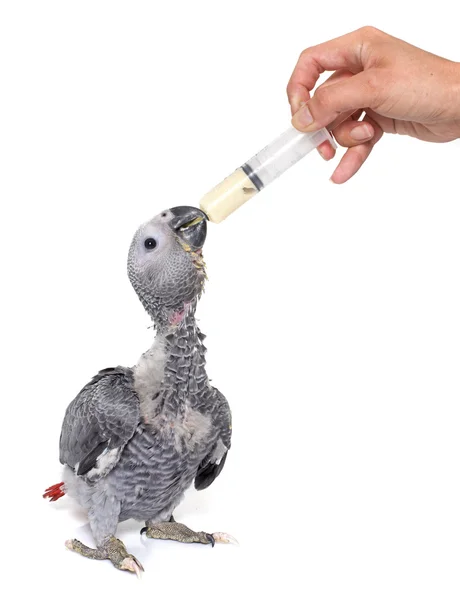 They will first investigate
the food; then, pick it up and start
self-feeding. (Supply fresh Avi-Cakes daily.) When the babies are eating
the Avi-Cakes you will first want to eliminate the middle of the day
hand-fed meal. As the birds continue
eating on their own, discontinue the morning and finally the evening hand-fed
meal.
They will first investigate
the food; then, pick it up and start
self-feeding. (Supply fresh Avi-Cakes daily.) When the babies are eating
the Avi-Cakes you will first want to eliminate the middle of the day
hand-fed meal. As the birds continue
eating on their own, discontinue the morning and finally the evening hand-fed
meal.
Since Avi-Cakes provide complete nutrition for pet birds, you may continue feeding Avi-Cakes or you may choose one of the other fine quality foods manufactured by Lafeber Company.
This bit of information was brought to you by Lafeber Bird Foods
KAYTEE Exact Handfeeding Baby Bird Food, 22-lb pail
By Kaytee
Rated 4.8571 out of 5 stars
Empty StarEmpty StarEmpty StarEmpty StarEmpty StarFilled starFilled starFilled starFilled starFilled starSlide 1 of 5
Slide 1 of 5
Deal
7. 5-oz bag18-oz jar5-lb bag22-lb pail
5-oz bag18-oz jar5-lb bag22-lb pail
Size
Size
7.5-oz bag
18-oz jar
5-lb bag
22-lb pail
$122.48Chewy Price
List:
Tooltip Available
List Price is the suggested retail price from a manufacturer, supplier, or other retailer. It may not necessarily reflect an actual price offered on our site or elsewhere.
$149.99Chewy Price
Save
$27.51
(18%)
$116.36Autoship Price
Autoship
(Save an extra 5%)
Choose Autoship at checkout for regular deliveries.
Why Autoship?
- FREE access to chat with licensed vets 7 days a week.
- Save 5% on all future Autoship orders.
- No fees, no commitments - cancel Autoship anytime.
123456789101112
Quantity
In Stock
FREE 1-3 day shipping
Frequently Bought Together
Deal
This Item - Kaytee Exact Handfeeding Baby Bird Food, 22-lb pail
Rated 4. 8571 out of 5 stars
8571 out of 5 stars
56
$122.48Chewy Price
Spend $100, Get $30 eGift Card With Code: FALL2022
Deal
Quiko Classic Egg Food Supplement for Canaries & Finches, 1.1-lb bag
Rated 4.8077 out of 5 stars
Filled starFilled starFilled starFilled starFilled star26
$7.99Chewy Price
Spend $100, Get $30 eGift Card With Code: FALL2022
Deal
Higgins inTune Hand Feeding For All Baby Birds Food, 10-oz bag
Rated 5 out of 5 stars
Filled starFilled starFilled starFilled starFilled star4
$8.94Chewy Price
Spend $100, Get $30 eGift Card With Code: FALL2022
Total Price: $0.00
About This Item
Learn More About Kaytee From Our Team of Experts
Pet Lovers Also Bought
Deal
Brown's Encore Natural Poultry Grit Plus Chicken Feed, 16-oz bag, 8 count
Rated 3.9592 out of 5 stars
Filled starFilled starFilled starFilled starFilled star49
$24.16Chewy Price
$34.99List Price
$22.95Autoship Price
Autoship
Spend $100, Get $30 eGift Card With Code: FALL2022
Deal
Kaytee Exact Hand Feeding High Fat Formula Baby Bird Food, 5-lb bag
Rated 4.8077 out of 5 stars
Filled starFilled starFilled starFilled starFilled star26
$29.95Chewy Price
$37.99List Price
$28.45Autoship Price
Autoship
Spend $100, Get $30 eGift Card With Code: FALL2022
Deal
ZuPreem Smart Selects Macaw Food, 4-lb bag
Rated 3.9048 out of 5 stars
Filled starFilled starFilled starFilled starFilled star21
$20.92Chewy Price
$27.49List Price
$19.87Autoship Price
Autoship
Spend $100, Get $30 eGift Card With Code: FALL2022
Deal
Kaytee Fiesta Variety Mix Cockatiel Food, 4.5-lb bag
Rated 4.0286 out of 5 stars
Filled starFilled starFilled starFilled starFilled star35
$18.99Chewy Price
$23.99List Price
$18.04Autoship Price
Autoship
Spend $100, Get $30 eGift Card With Code: FALL2022
Vitakraft Menu Care Complex Canary & Finch Food, 2.5-lb bag, bundle of 2
Rated 4.7059 out of 5 stars
Filled starFilled starFilled starFilled starFilled star17
$9.48Chewy Price
$9.98List Price
$9.01Autoship Price
Autoship
Spend $100, Get $30 eGift Card With Code: FALL2022
Deal
ZuPreem VeggieBlend Flavor with Natural Flavor, Daily Parrot & Conure Food, 3.25-lb bag
Rated 3.9107 out of 5 stars
Filled starFilled starFilled starFilled starFilled star56
$21.99Chewy Price
$25.49List Price
$20.89Autoship Price
Autoship
Spend $100, Get $30 eGift Card With Code: FALL2022
Deal
ZuPreem FruitBlend with Natural Fruit Flavors Daily Extra Small Bird Food, 10-lb bag
Rated 4.5556 out of 5 stars
Filled starFilled starFilled starFilled starFilled star36
$35.20Chewy Price
$54.99List Price
$33.44Autoship Price
Autoship
Spend $100, Get $30 eGift Card With Code: FALL2022
Deal
ZuPreem Smart Selects Parakeet Food, 2-lb bag
Rated 4.5 out of 5 stars
Filled starFilled starFilled starFilled starFilled star38
$13.40Chewy Price
$13.49List Price
$12.73Autoship Price
Autoship
Spend $100, Get $30 eGift Card With Code: FALL2022
Deal
Kaytee Exact Rainbow Parrot & Conure Bird Food, 2.5-lb bag
Rated 4.2683 out of 5 stars
Filled starFilled starFilled starFilled starFilled star41
$17.99Chewy Price
$17.09Autoship Price
Autoship
Spend $100, Get $30 eGift Card With Code: FALL2022
Deal
Wagner's Southern Regional Blend Deluxe Wild Bird Food, 20-lb bag
Rated 4.0278 out of 5 stars
Filled starFilled starFilled starFilled starFilled star36
$20.98Chewy Price
$19.93Autoship Price
Autoship
Spend $100, Get $30 eGift Card With Code: FALL2022
Deal
Wagner's Shell Free Premium Wild Bird Food, 5-lb bag
Rated 3.7879 out of 5 stars
Filled starFilled starFilled starFilled starFilled star33
$11.98Chewy Price
$11.38Autoship Price
Autoship
Spend $100, Get $30 eGift Card With Code: FALL2022
Deal
ZuPreem Smart Selects Parrot & Conure Food, 4-lb bag
Rated 4.3721 out of 5 stars
Filled starFilled starFilled starFilled starFilled star43
$19.70Chewy Price
$27.49List Price
$18.71Autoship Price
Autoship
Spend $100, Get $30 eGift Card With Code: FALL2022
Compare Similar Items
Your Question
Your Nickname
Is this a good food for baby pigeons?
Answer by
Chewy•
Dec 16, 2020
This product is formulated for use with: Baby Parrots (including Parakeets, Lovebirds, Cockatiels, Conures, Cockatoos, Macaws, Amazons, African Greys, and other Psittacines) and Baby Passerines.
I have successfully used this on baby doves, chickens and finches as early as one day old, so what is in this baby bird food that makes it formulated for hookbills?
Answer by
Chewy•
Oct 16, 2017
The Baby Formula contains probiotics, prebiotics, digestive enzymes to ensure healthy digestion and a balanced, high- nutrient formula that helps babies grow faster, wean earlier and develop better plumage.
Is it good for baby sparrows
Answer by
Chewy•
Jul 07, 2019
This food can be used with baby sparrows.
Is this formula good for parakeets? thx! :)
Answer by
Chewy•
Oct 16, 2017
This formula will work for Parakeets.
4.9
Rated 4.8571 out of 5 stars
Empty StarEmpty StarEmpty StarEmpty StarEmpty StarFilled starFilled starFilled starFilled starFilled star56 Reviews
96%
Would recommend to a friend
2
1.7857
2%
4
8.9286
9%
5
89.2857
89%
Rated 5 out of 5 stars
Empty StarEmpty StarEmpty StarEmpty StarEmpty StarFilled starFilled starFilled starFilled starFilled starBy Idunno on Jun 19, 2022
formula helpful for omnivores too
Rgregarding other reviews as to not for wild birds or, not for starlings… yes starlings need approx 33%. Protein, but add protein to this, or rather ,add This to protein , as it has the -biotics and enzymes that can help. Wit h any bird consider complete nutritional needs.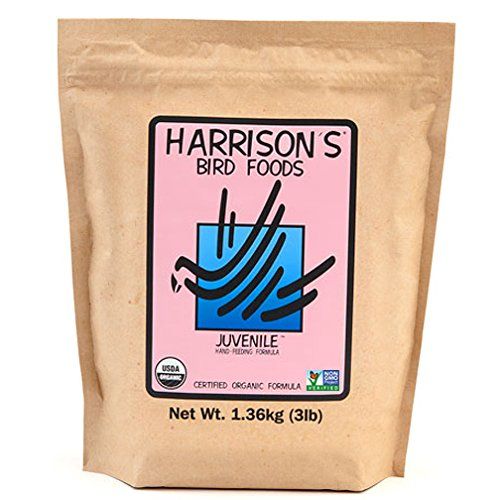 And consider the specific situation, we don’t always have access to the exact ingredients we want. So we do our best with what we have available.
And consider the specific situation, we don’t always have access to the exact ingredients we want. So we do our best with what we have available.
Rated 2 out of 5 stars
Empty StarEmpty StarEmpty StarEmpty StarEmpty StarFilled starFilled starFilled starFilled starFilled starBy Hanna on Jul 9, 2022
outdated item
Called the Chewy , about outdated product They said , they would take care of it . GOOD RESPOND !! All their products are always fresh , this was just an over sight would order from them again when i needed too . Good customer responds
Rated 5 out of 5 stars
Empty StarEmpty StarEmpty StarEmpty StarEmpty StarFilled starFilled starFilled starFilled starFilled starBy Pakeer on Jan 15, 2022
Excellent product and service
Very good prices, easy to buy, high quality, and employees were very accommodating. I will be buying from here again if I can get a wholesale deal.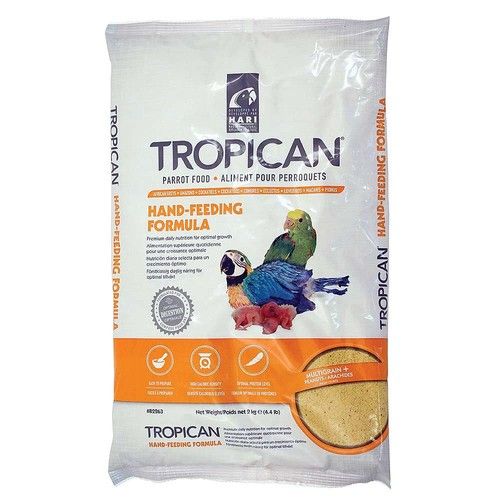 If there is any wholesale deals available, let me know
If there is any wholesale deals available, let me know
Rated 5 out of 5 stars
Empty StarEmpty StarEmpty StarEmpty StarEmpty StarFilled starFilled starFilled starFilled starFilled starBy Rhoneclem028 on Dec 22, 2021
If Mommy can't
If the parents aren't able to care for their babies this is the best way to go. I have used this formula for quite a few babies and they all have done great with this
Rated 5 out of 5 stars
Empty StarEmpty StarEmpty StarEmpty StarEmpty StarFilled starFilled starFilled starFilled starFilled starBy Smitty on Sep 18, 2021
First experience a total success shopping rexexw5
I was so pleased when my order arrived so quickly. I had run out of food for my baby. I had traveled 40 miles to town to pick some up but stores were all out. I should have placed my order sooner!
Rated 5 out of 5 stars
Empty StarEmpty StarEmpty StarEmpty StarEmpty StarFilled starFilled starFilled starFilled starFilled starBy Sandee on Oct 19, 2021
I love shopping at Chewy
Can’t get a better price, great quality and very efficient with delivery.
Rated 5 out of 5 stars
Empty StarEmpty StarEmpty StarEmpty StarEmpty StarFilled starFilled starFilled starFilled starFilled starBy pigeonpete on Sep 11, 2021
Kaytee Exact Hand Feeding Formula Baby Bird Food
Kaytee Exact Hand Feeding Formula Baby Bird Food is the standard the business
Rated 5 out of 5 stars
Empty StarEmpty StarEmpty StarEmpty StarEmpty StarFilled starFilled starFilled starFilled starFilled starBy Catwoman06 on Sep 8, 2021
Baby Bird Formula
Very good value.. Baby birds grow very fast and look very healthy on this food
Rated 4 out of 5 stars
Empty StarEmpty StarEmpty StarEmpty StarEmpty StarFilled starFilled starFilled starFilled starFilled starBy MickeyNz on Jan 22, 2021
Not appropriate for ALL baby birds - Insectivorous or Omnivorous Wild birds.
Hi there, Baby Starlings & Sparrows need a baby diet high in animal protein. Yes as adults they also eat seed but to develop as nestlings & fledglings they need a diet 33% and higher in animal protein. Kaytee is only 22% protein and its from plants. Your rescue baby starling and sparrow needs more than that. Check back of cat or dog biscuits - first ingredient needs to be chicken and check the percentage of protein. Soak in hot water and mush it up completely like porridge so the baby doesn't have blockages in its corp when you feed it. Needs calcium and bird vitamins as well, not just protein but that will get you far!. I do recommend Kaytee for Pet Parrots etc and the ones that it mentions on the back of the package.
Yes as adults they also eat seed but to develop as nestlings & fledglings they need a diet 33% and higher in animal protein. Kaytee is only 22% protein and its from plants. Your rescue baby starling and sparrow needs more than that. Check back of cat or dog biscuits - first ingredient needs to be chicken and check the percentage of protein. Soak in hot water and mush it up completely like porridge so the baby doesn't have blockages in its corp when you feed it. Needs calcium and bird vitamins as well, not just protein but that will get you far!. I do recommend Kaytee for Pet Parrots etc and the ones that it mentions on the back of the package.
Rated 4 out of 5 stars
Empty StarEmpty StarEmpty StarEmpty StarEmpty StarFilled starFilled starFilled starFilled starFilled starBy CBMorgan on Feb 13, 2021
No sugar added!
I haven’t used this yet, but it was the only hand feeding formula that has good mixing consistency (per reviews) that surprisingly does not contain added sugar! Though I have read many people complaining about Kaytee in general, their formula is as complete as you could hope for considering today’s pet-feeding standards, and is not grainy like Harrison’s, and a fraction of the price.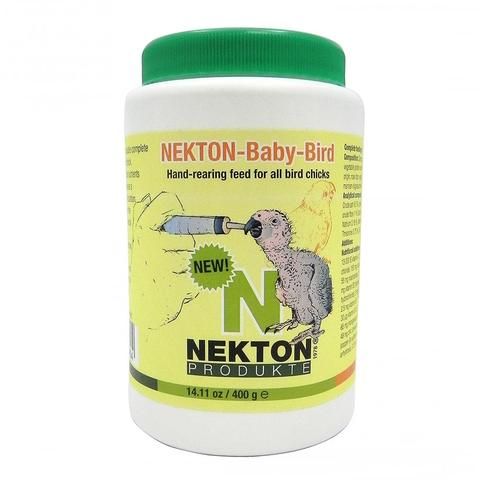
Artificial rearing of chicks
Unfortunately, it also happens that the chicks are left without parents. This may be from the death of birds, the lack of maternal instinct and aggressive behavior.
First of all, calm down! Feeding by hand is not difficult, and some may even find it very interesting. These chicks will be tame from a young age and make excellent companions. The only thing that can be difficult is the lack of time, work. To feed the chicks, you need to be near them all the time.
You can try to save the chick. To do this, you will need:
- NutriBird A19 and A21 special mixture for feeding chicks, as well as Fiory (it is not cheap, but it completely replaces parent feeding).
- If the chick has not fledged, it does not have down, then you will also need to maintain humidity and temperature in the chick's place of residence.
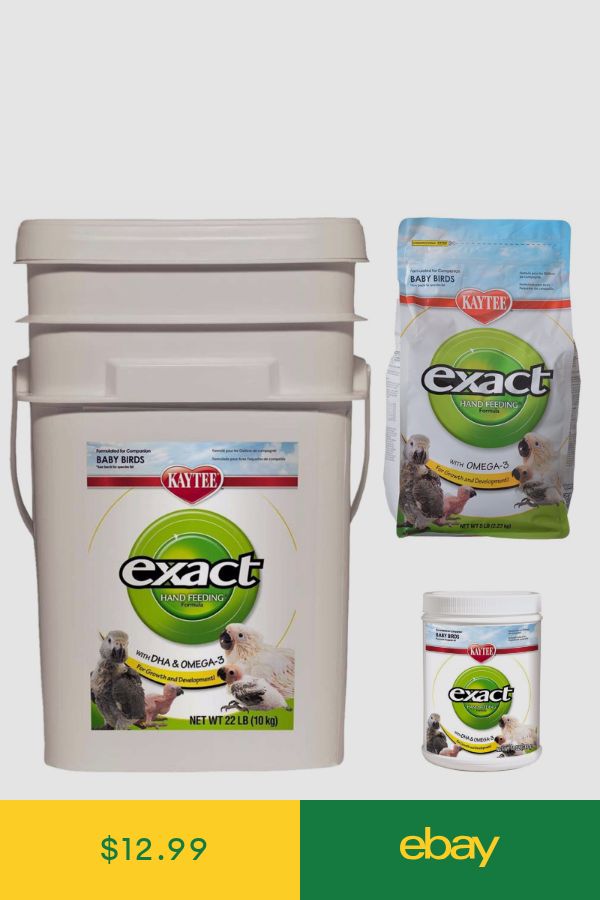 To do this, a brooder will help you. Read more on how to make a brooder with your own hands on our website.
To do this, a brooder will help you. Read more on how to make a brooder with your own hands on our website.
When you are convinced that everything you need for feeding is in place, you need to create favorable conditions for life:
- The temperature is about +33 degrees
.
If you don't have a brooder, you can create such conditions by putting the house on a heating pad or wrapping it in a thermal blanket, while constantly checking the temperature in the house to avoid overheating.
The main thing to remember: overheating will kill the chick in a few minutes, and underheating in a few hours. For
Sprinkle the nesting area with clean water from time to time to maintain humidity.
- NutriBird A19 and A21, as well as Fiory, are used for rearing. These mixtures are suitable for chicks from the very first day of life, and remain relevant until the start of independent life.
If you can’t find such a mixture anywhere, then you use silent baby food (you can porridge), which is diluted to the consistency of liquid puree, in addition to this, you can add a couple of drops of freshly squeezed apple or carrot juice, a small piece of boiled egg yolks (missed through a sieve).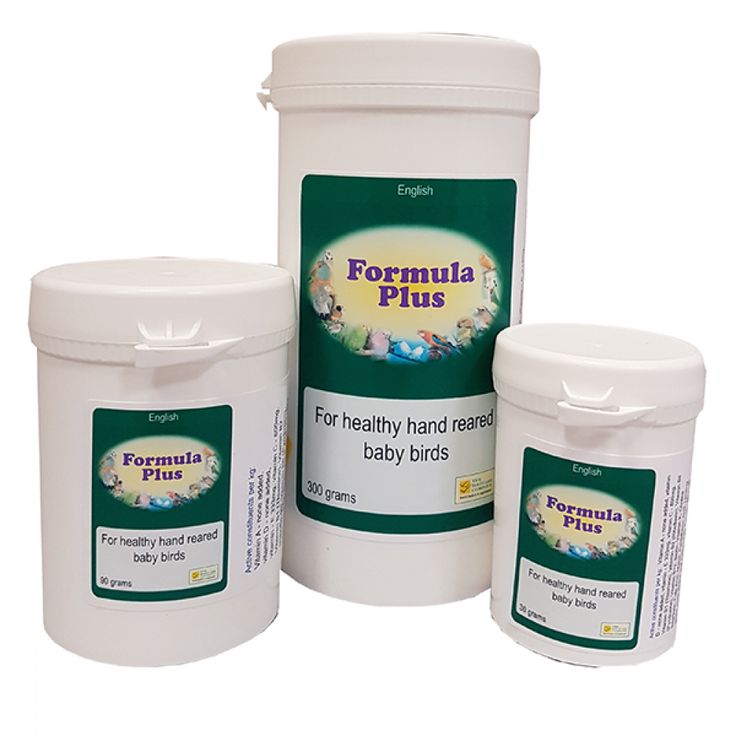
- The temperature of the mixture is about +39 degrees. Immediately before feeding, it is necessary to check the temperature of the feed mixture by measuring it with a thermometer. At lower temperatures, the mixture is not digested, remains in the stomach and begins to ferment, and the chick dies of hunger. At higher levels, the mixture burns the goiter.
- To feed a chick, hold it in your hand and place it on your back. With a small brush we take a drop of the prepared mixture and bring it to the side of the parrot's beak, if the chick is not very weak, then it will swallow a drop of food. There is another way: we pump the food into the syringe and slowly squeeze the chick drop by drop, also on the side of the beak. At a time, you need to feed 1-2 ml of the mixture. Feeding p
is repeated every half hour to an hour. If after feeding the chick is smeared in porridge, then you need to wipe these places with a cotton swab dipped in chamomile decoction. The first days, the chicks may spit from the mixture, because. this is still not goiter milk, but over time, hunger will take its toll and they will get used to eating in this way.
this is still not goiter milk, but over time, hunger will take its toll and they will get used to eating in this way. - You also need to monitor the absorption of food so that it does not stagnate in the stomach. Every day
the amount of the mixture and the breaks in feeding should be increased. When feeding, it is better not to observe the exact feeding time, but to feed only when the chick asks, raising its head and squeaking. - From the age of one week it is no longer necessary to feed the chick at night (from 24:00 to 06:00 in the morning). During the day, feeding should be every 2 hours.
Non -resting chick feeding:
Summary
Categories: wavy parrots, sparrowing parrots, Caucari parrots, Corella parrots, Uzemkhostini parrots, propagation (nesting) of wavy parrots, reproduction (nesting) of sparrowing (nesting) of spinning parliament (nesting) of sprinkling (nesting) of spine. , Reproduction (nesting) of lovebirdsPrices for Universal sumish for manual yearning of parrots - buy from Kiev in the company "Gold Birds"
Gold Birds seller develops his business on Prom.


